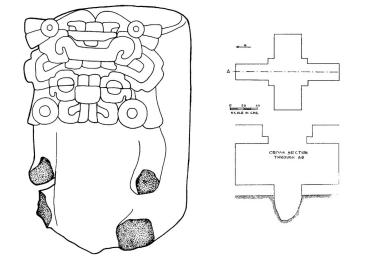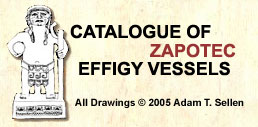| Key: UD Yatachio | | Actual Location: Unknown location | | Provenance: Cruciform cache, Mound C, Yatachio, Mixteca Alta, Oaxaca | | Chronology: Xoo 600 - 800 AD | | Click to view Chronology | | Reference: Paddock 1953: 14-15, and 42, fig. 10. | | Comments: (This information from Javier Urcid 2006) The cache had been seemingly disturbed, but it apparently had at least six anthropomorphic vases, including this one. The excavators report that this vase was "definitely not of a local make" (Paddock 1953: 15). Other objects associated with the cache included three small jade pieces (including a half broken disk), a shell piece, a tiny polished jade ring (from a composite earplug?), a small thick jade bead, and a button of shell. | | Glyphs: The glyph C in the headress. | |
| | 
Click to view high resolution in a new window
select this image for review |
